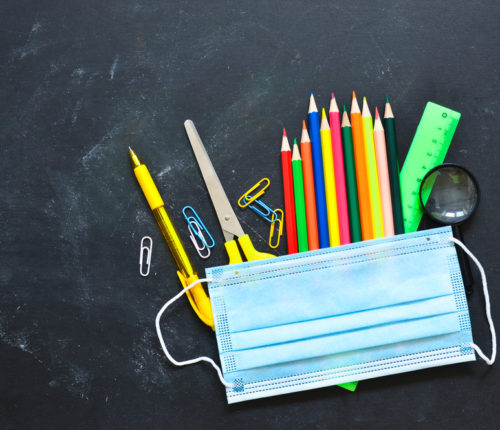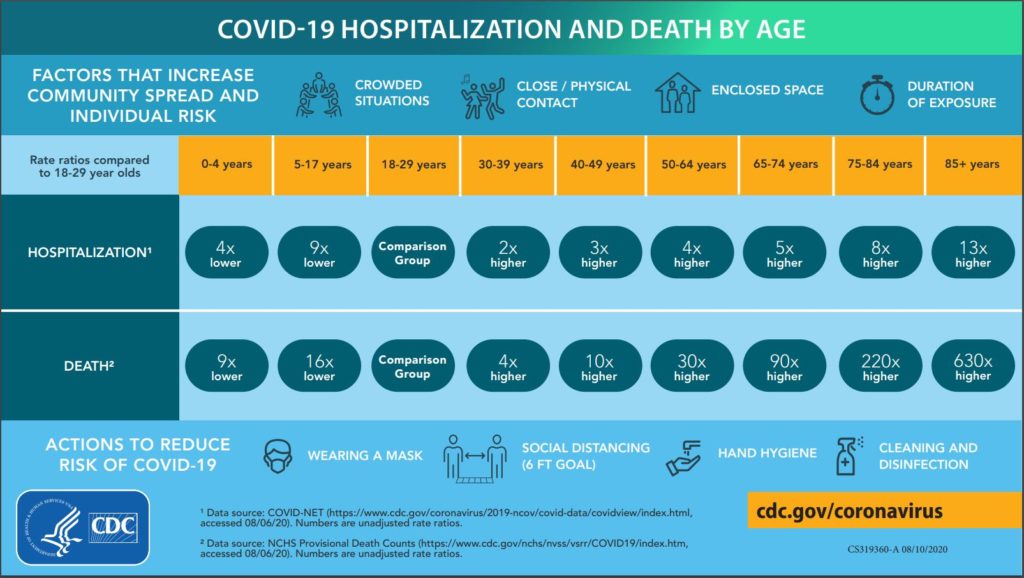
Parents and Teachers Must Work Together to Fight COVID-19 in Children
Schools around the country are starting to reopen in various phases of online learning and in-person classes. At the same time, rates of COVID-19 in children continue to rise. This has many parents and teachers reasonably concerned about their safety and that of students returning to school.
But what is the coronavirus risk to infants and children as schools and daycares reopen? What can parents and teachers do to protect themselves and help stop community transmission? Experts say that parents and teachers need to work together to fight COVID-19 in children.
Rates of COVID-19 in Children Have Parents Questioning Returning to School
The decision to send your children back to school during the COVID-19 pandemic is an incredibly personal one. Every family is different, and every child has different needs. Dr. Edith Bracho-Sanchez, assistant professor of pediatrics at Columbia University Medical Center, recommends parents consider individual family factors when making a decision about returning to school. Bracho-Sanchez says,
“Take into account who is living at home, the ages of people at home and potential underlying risk factors of family members. Whatever decision a family makes, it’s the right decision for that family. We need to validate what each family is going through and validate the decisions they’re arriving at.”
For many families, returning to school is necessary because parents have to return to work. Also, families with children who have special needs may rely on in-person services that they cannot access at home.
On the other end of that spectrum are families who have health considerations that make returning to school more dangerous. If a child or parent has a weak immune system or a chronic condition, returning to school opens the door to possibly exposing everyone in the household to COVID-19. In these situations, parents may find the best option is to choose digital learning.
Ultimately, there is likely no “right” or “wrong” answer to whether children should return to school. The decision should be based on what is right for each family and their medical needs.
Cases of COVID-19 in Children on the Rise
Since the onset of the COVID-19 pandemic, there have been a total of 338,982 cases of COVID-19 in children. That number represents 8.8% of all cases of COVID-19. However, that number is increasing. According to a report from the Children’s Hospital Association and the American Academy of Pediatrics, from July 16 to July 30, cases of COVID-19 in children increased by 40%.
The Centers for Disease Control and Prevention (CDC) says that children under 18 account for 7.4% of all COVID-19 cases, and less than 1% of COVID-19 deaths. Hospitalization and death rates among children with COVID-19 continue to be less than among adults, but experts warn that parents shouldn’t get too comfortable.

Children are vulnerable to COVID-19, and are particularly vulnerable to PIMS/MIS-C (Pediatric Inflammatory Multisystem Syndrome or Multisystem Inflammatory Syndrome in Children Associated with COVID-19). This mysterious illness continues to affect children around the world. The CDC reports 570 cases of PIMS/MIS-C in the U.S., with 10 deaths. The average age of these patients is eight years old.
As states consider reopening schools, experts recommend the following:
“States should continue to provide detailed reports on COVID-19 cases, testing, hospitalizations and mortality by age so that the effects of COVID-19 on children’s health can continue to be documented and monitored.”
Sending Your Children Back to School? Work with Teachers to Prevent COVID-19
Parents who are sending their children back to school this fall likely have some amount of anxiety about the process. Experts agree that parents should work with their child’s teacher(s) to understand what schools are doing to protect students and make sure their children are able to follow those protocols. Experts recommend parents consider the following:
Bus Safety
If your children ride the bus to school, try to place them on a bus that has windows open, is not at capacity and is requiring masks. This may not be possible for everyone. If you need to utilize bus service, talk to the school to find out what sort of policies they have in place to protect students on busses.
Class Size
Experts recommend limiting class size in order to maintain social distancing. Small groups are recommended for work time and play time. Lunch should be eaten in the classroom at the student’s desk, rather than in a crowded lunch room.
Keep Sick Children Home
It’s difficult for many parents to stay home from work and keep sick children home. However, this is imperative to stopping the spread of COVID-19 in children. Experts say that children who normally would go to school with a bit of a cough or runny nose should now be kept home. It is a shift that parents will have to adjust to.
Find out about Teacher Sick Policies
If your child is going to school in person, find out what the policies are for sick teachers. Experts recommend teachers also stay home if they are sick. Find out your school’s policy for substitute teachers, contact tracing and quarantine measures if a teacher gets sick.
Keep Up with Community Transmission
Experts warn that the biggest hurdle to successfully reopening schools is community virus transmission. For parents, making the decision about sending your children to school may depend on the current state of community transmission. Unfortunately, some states are finding that community transmission is a significant factor in school decisions.
This is evident in states like Georgia, where several school districts have been open for less than a week and already many are closing and students and staff are under quarantine. Some schools are quickly finding that community transmission is still high, and are switching over to online learning.
Be Flexible and Understanding
As hard as it may seem, one of the best things you can do as a parent right now is be patient and understanding. Schools that are reopening in person may have to make changes to their plans depending on community transmission and other factors. Parents should voice their concerns and be active in the school system in a constructive way.
Dr. Bracho-Sanchez says,
“There are so many smart people, committed teachers, parents and public health experts who are working together to come up with all sorts of very smart strategies. But, unfortunately, if we don’t set them up for success by first controlling the virus in the community, I don’t think there are going to be enough layers that are going to keep this virus out of schools.”

